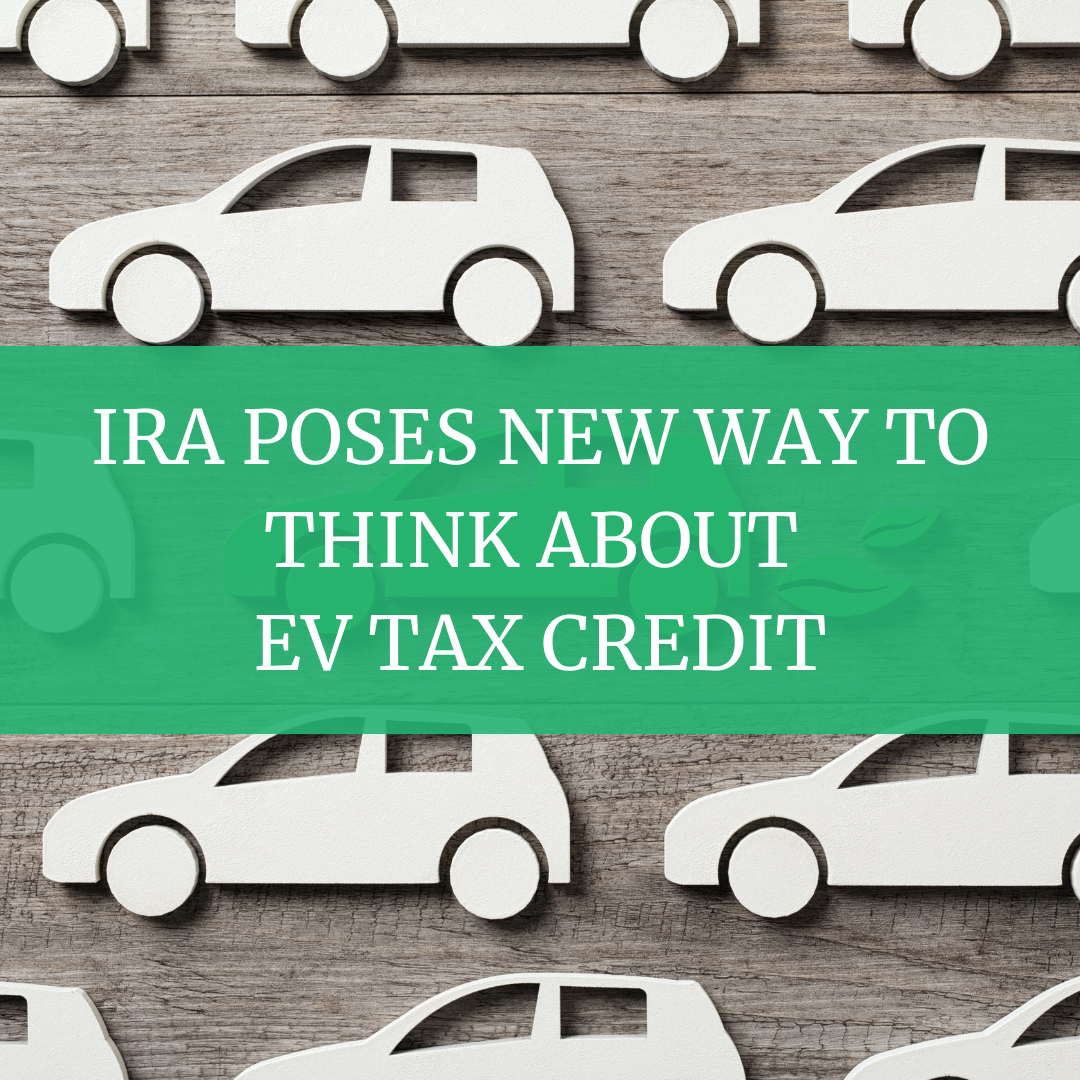The Inflation Reduction Act poses a new way to think about the EV Tax Credit
By James McCurdy
The word of the summer was compromise (at least among Progressives, Democrats, and so-called Democratic Moderates) and everyone found something to love and lament in the Inflation Reduction Act (IRA). For all its nuance, the IRA certainly deserves admiration and admonition—it’s not the Build Back Better Act we hoped for, but most agree it’s the best we can get. As national pundits continue to outline the frustration and optimism spurred by the IRA, the effect of the Act remains relatively nebulous in the minds of many Americans. The IRA is stocked full of important investments, yet one of its most household-oriented provisions is a reinvestment; a newly funded, reimagined Electric Vehicle (EV) tax credit that extends a hand to more consumers than ever.
Reliable and widespread Federal subsidies for electric cars are not a new development. In 2009, the Obama administration offered a $7,500 subsidy for many electric, hybrid, and cell-fueled vehicles. But until the passage of the IRA, the credit “sunset” on brands that sold more than 200,000 cars due to a sell-cap. That meant the most prodigious EV suppliers in the United States, namely Tesla and General Motors, with Toyota and Nissan trailing behind, could no longer offer tax credits to consumers. Additionally, the credit never applied to used vehicles, no matter how electric, effectively blocking entire segments of the country from EV ownership. And, ironically, disincentivizing the highly sustainable practice of buying things used. In another grand omission obstructing middle-class ownership of electric vehicles, the credit did not apply at the point of sale, leaving buyers with the same hefty price tag at the dealership.
The IRA’s EV credit updates Obama’s 2009 write-off while posing a string of regulations that bolster the ability of lower-income Americans to buy electric vehicles while imposing regulations on carmakers seeking to unlock the incentive for potential buyers. Firstly, the new credit extends a $4,000 write-off to used vehicles and grants used and new EV credits at the point of sale. The IRA also renews the credit for carmakers that surpassed the 200,000 sell-cap of 2009, extending their eligibility for the $7,500 credit until 2032. But to gain access to the credit all carmakers, and consumers, must meet new stipulations.
To prevent the subsidy from helping those most likely to own EVs—the well-to-do—the IRA has imposed income limits for consumers looking to collect on the subsidy. Those buying new EVs must have an income of $300,000 or lower if they are filing jointly, or $150,000 for single filers. For used EVs, those filing jointly must have an income of $150,000 or lower, or $75,000 if they are filing as singles.
For carmakers, the regulations not only intend to incrementally lower the cost of electric cars over the next ten years but also seek to bring sustainable manufacturing jobs back to North America. By 2023, carmakers must source 40% of the critical components needed for electric batteries from countries engaged in free trade agreements with the United States. This number slowly progresses until 2028 when regulations require carmakers to source 100% of a battery’s components from North American countries. This means carmakers who wish to entice and compete for the rapidly-growing EV consumer base with lower prices, thanks to Uncle Sam, must invest in American jobs; a task that is aided by billions of dollars thanks to the IRA.
But car-manufacturing behemoths don’t get off that easy. In addition to the incentivized restructuring of the automotive manufacturing industry through sourcing and building requirements, carmakers must also conform to price limits if they wish to proffer the government handout. Electric sedans are capped at $55,000; SUVs, trucks, and vans are capped at $80,000; used EVs must cost no more than $25,000. This provision aims to accelerate the trickle-down of new electric technology from luxury vehicles to more affordable cars while imposing a price limit for carmakers to discourage them from inflating prices.
Despite the potential found in the IRA’s EV tax credit, a foundational phenomenon continues to blight the emissions-restricting impact of electric vehicles: not enough people drive them. In March, Bloomberg found that less than 15% of Americans can reasonably afford an electric car. The rather discouraging discovery illuminates the result of locking up tools for climate mitigation behind daunting price tags that essentially consign the EV option to upper-class consumers. If we hope to meet our nation's climate goals, we must face the transportation sector’s emissions head-on with the modern technology to aid it. The IRA, like the electric vehicles it subsidies, is not a zero-sum solution but a new frontier to be explored, broadened, and bettered in the pursuit of a livable planet.

